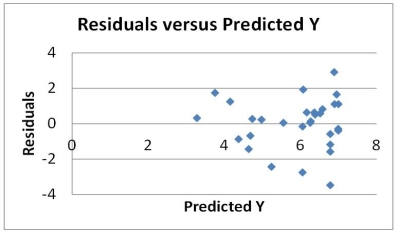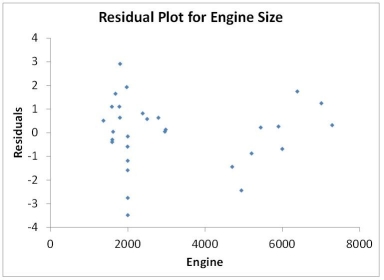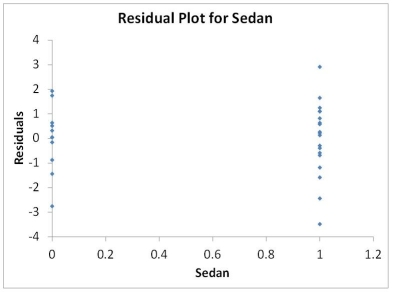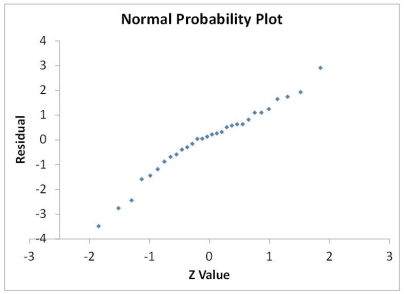TABLE 14-16
What are the factors that determine the acceleration time (in sec.)from 0 to 60 miles per hour of a car? Data on the following variables for 30 different vehicle models were collected:
Y (Accel Time): Acceleration time in sec.
X1 (Engine Size): c.c.
X2 (Sedan): 1 if the vehicle model is a sedan and 0 otherwise
The regression results using acceleration time as the dependent variable and the remaining variables as the independent variables are presented below.  The various residual plots are as shown below.
The various residual plots are as shown below. 


 The coefficient of partial determinations
The coefficient of partial determinations  and
and  are 0.3301,and 0.0594,respectively.
are 0.3301,and 0.0594,respectively.
The coefficient of determination for the regression model using each of the 2 independent variables as the dependent variable and the other independent variable as independent variables (  )are,respectively 0.0077,and 0.0077.
)are,respectively 0.0077,and 0.0077.
-True or False: Referring to Table 14-16,the 0 to 60 miles per hour acceleration time of a sedan is predicted to be 0.7264 seconds lower than that of a non-sedan with the same engine size.
Definitions:
Mum Effect
The tendency to avoid communicating unfavourable news to others.
Decoding Problems
The process of interpreting and breaking down complex problems into manageable parts for better understanding and solution.
Non-verbal Communication
The process of conveying a message without the use of words, through gestures, facial expressions, and body language.
Filtering
The tendency for a message to be watered down or stopped during transmission.
Q4: True or False: To test whether one
Q15: As a project for his business statistics
Q45: Referring to Table 16-10,the value of the
Q73: Referring to Table 12-5,what is the value
Q76: True or False: Referring to Table 14-11,the
Q113: Referring to Table 14-14,the fitted model for
Q127: Referring to Table 14-18,which of the following
Q194: True or False: Referring to Table 14-15,the
Q257: Referring to Table 14-17,estimate the mean number
Q283: Referring to Table 14-8,the value of the